ADE and DRDO should actively engage private sector and give them enough autonomy if they want to speed up the timeline. Though ADE came a long way from what it's been previously, being a decades old govt org filled with bureaucracy and red-tape...I doubt if they'd be able to meet deadlines. Project Management is extremely crucial and they should take a page from Turkish UAV programsADE steps into new decade with planeloads of critical projects
Anantha Krishnan M
Published: January 10, 2021 06:13 AM IST
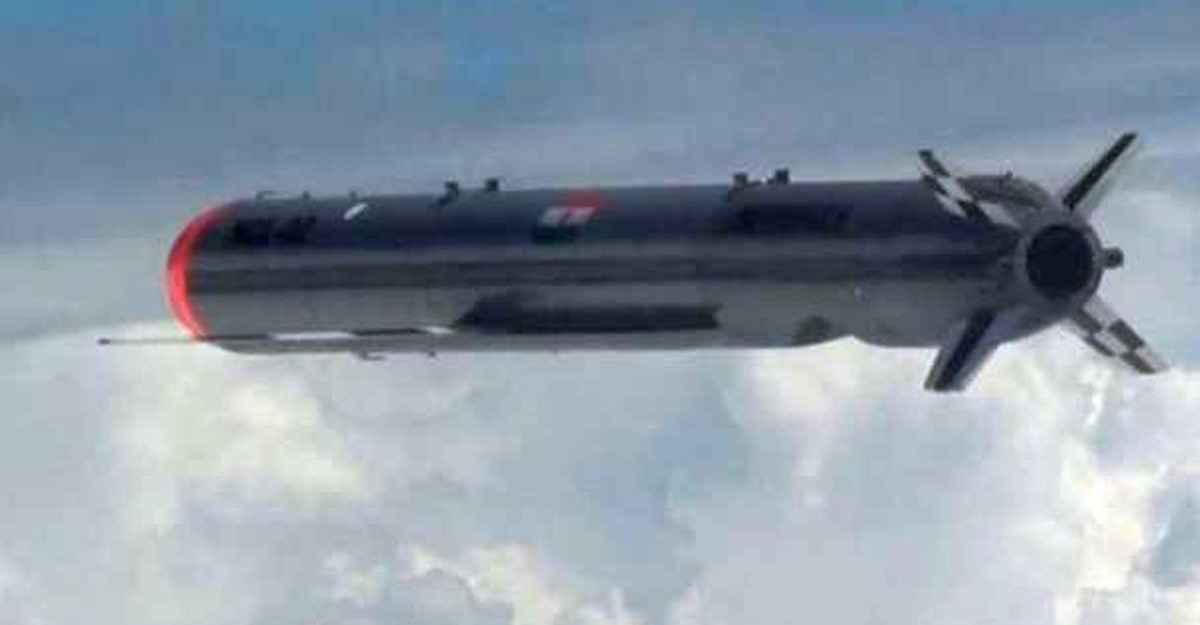
Bengaluru: The Aeronautical Development Establishment (ADE) is warming up to undertake a series of missions in the year 2021, leaving behind the uncertainties of a pandemic year that also saw minor setbacks.
ADE which celebrated its 62nd Raising Day recently has been given the mandate of developing variants of subsonic missiles and unmanned platforms.
According to sources, ADE scientists are now gearing up for the second test of the Nirbhay variant – the Indigenous Technology Cruise Missile (ITCM).
The ITCM-02 with the Small Turbo Fan Engine (STFE) will undertake another flight trial in the next few months. The first mission of ICTM with STFE wasn’t a complete success.
ADE is also poised to hand over the first Full Mission Simulator (FMS) for Light Combat Aircraft Tejas to the Indian Air Force (IAF).
IAF Test Pilots have been using the FMS at ADE facilities for some years now, and based on their feedback ADE made several upgradations to its systems.
Sources said that the FMS from ADE requires minimum maintenance and offers long and realistic flight training options on ground for squadron pilots.
A new facility has been earmarked for housing FMS systems, which is likely to be inaugurated this year.
Rustom-II
On the unmanned front, the scientists are burning the midnight oil to meet the IAF requirements for Rustom-II (Tapas), the medium-altitude long-endurance (MALE) unmanned aerial vehicle (UAV).
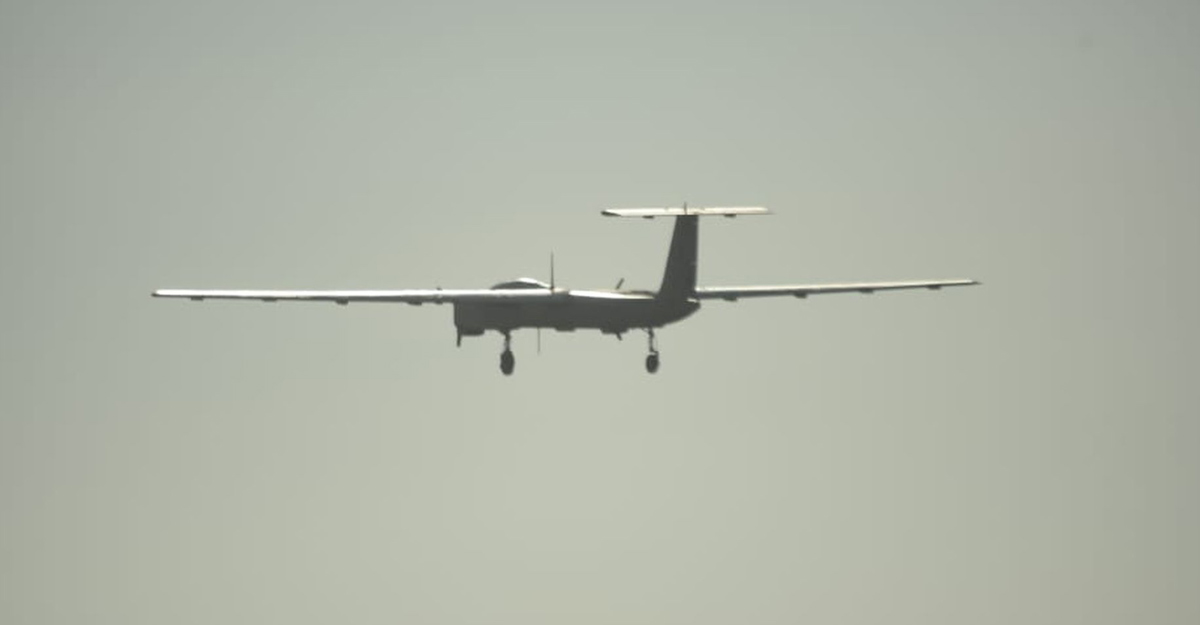
Rustom-II has achieved eight-hour flight endurance at 22,000 feet and efforts are now on to take the endurance closer to 24 hours at 30,000 feet, as per the user mandate.
Last year, Rustom-II had flown in the Satellite Communication (SATCOM) mode for the first time. It had also flown with the long range electro optical payload.
Rustom-II has already flown with a 250-km line of sight, sources said.
A proposal for a high-altitude long-endurance (HALE) UAV is likely to be sent to the government this year, for which the engine will come from Hindustan Aeronautics Limited (HAL).
On Abhyas – the High-speed Expendable Aerial Target (HEAT), sources said that the open and closed loop trials have been completed. The Transfer of Technology (ToT) for Abhyas is expected to happen this year.
Abhyas can be launched from a zero-length launcher by two 68 mm rockets, and fly up to an altitude of 5 km at a speed of 180 met/sec. The platform has a maximum endurance of 45 minutes and weighs around 70kg. This low cost platform has modular construction, is easy to handle, is equipped with auto-pilot and a simple launcher, and can be deployed in a decoy role as well.
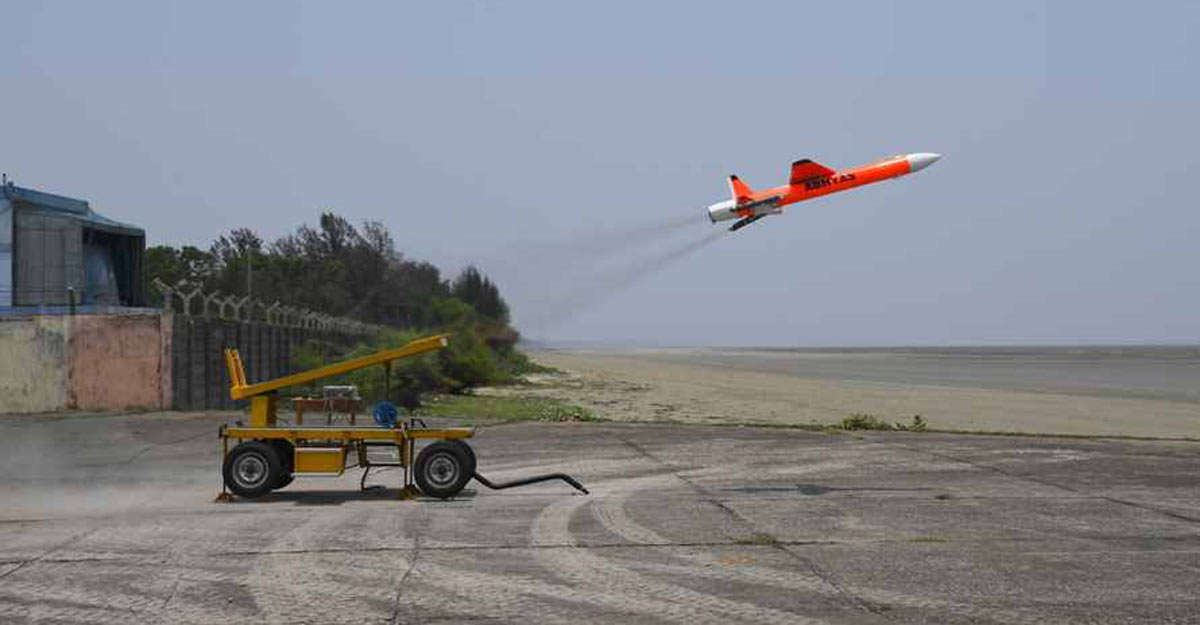
Work on the submarine-launched cruise missile too is in progress, with several systems under production now.
Flagship Mission
ADE was nominated to undertake work on India’s ambitious and less-talked-about unmanned combat aerial vehicle (UCAV) last year. A small team of scientists has been working on a mini-variant of the mission for the last one year.
The Stealth Wing Flying Testbed (SWiFT) UAV, which is the precursor technology demonstrator project of UCAV, will see some development flights this year.
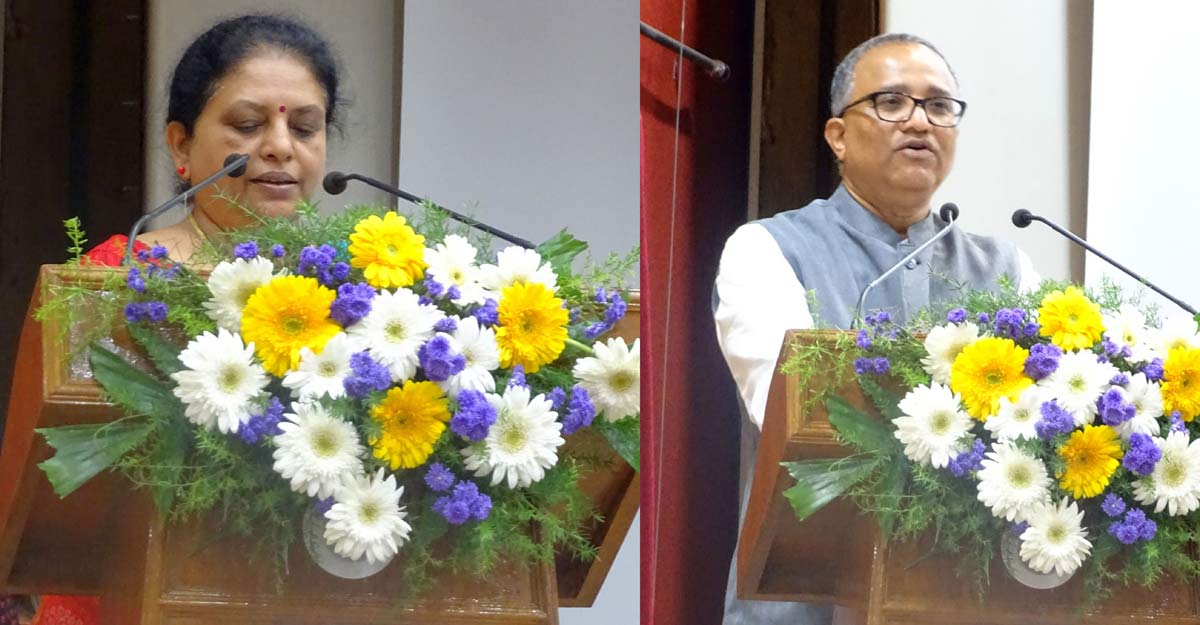
Interestingly, the name ‘Ghatak’ given to the UCAV, seems to have been dropped now.
Sources confirm that UCAV is likely to become a flagship programme for India, with the government completely banking on the capabilities promised by the DRDO top brass.
The Cabinet Committee on Security (CCS) nod for the UCAV too is expected this year, based on the results of SWiFT.
The Indian Navy too is keen on a deck-based UCAV, sources said.
Armed roles for Rustom-I (R-I) too are being looked at currently and the scientists would begin testing of new systems and payloads for the same this year.
The Border Security Force (BSF) and the Central Reserve Police Force (CRPF) have shown interest in such systems.
ATR expansion
The Aeronautical Test Range (ATR) at Challakere in Chitradurga, which is under the command of ADE, will see some upgradation activities this year.
The runway length is likely to be extended from 2 km to 3 km, in addition to the setting up of a high-power computing facility.
Defence Research and Development Organisation Chairman Dr G Satheesh Reddy, Director-General (Aero Cluster) Dr Tessy Thomas and ADE Director Dr S Venugopal are said to have spelt out their vision for the lab during their Foundation Day addresses.
Established in 1959, ADE began its journey as an independent DRDO lab, with aeronautical projects such as Nandi hovercraft and Dart target.
As reported by Onmanorama during Defence Expo 2020, ADE scientists have already began work on the LRLACM (Long Range Land Attack Cruise Missile), which will have a range of over 1,000 km.
The Defence Acquisitions Council (DAC) had cleared the proposal for LRLACM in July last year.
ADE steps into a new decade with loads of exciting and challenging missions. While the top brass wants unique products that can work miracles for the armed forces, ADE scientists are hoping to get their act together and do the right things, the right way at the right time.
“Two hundred per cent commitment is the key,” says an official.
ADE steps into new decade with planeloads of critical projects
ADE which celebrated its 62nd Raising Day recently has been given the mandate of developing variants of subsonic missiles and unmanned platforms..Aeronautical Development Establishment, Indigenous Technology Cruise Missile, Nirbhay, Rustom-II, Aeronautical Test Rangewww.onmanorama.com
You are using an out of date browser. It may not display this or other websites correctly.
You should upgrade or use an alternative browser.
You should upgrade or use an alternative browser.
With Covid-19 restrictions now being eased as the outbreak ebbs, and facing an aggressive China on the Line of Actual Control and in the Indian Ocean, the Indian armed forces are preparing to induct multiple platforms this year. Here are five platforms that are likely to enter service in 2021:
1) MH 60R
During US President Donald Trump’s 2019 visit to India, the two countries had signed a $2.6 billion deal for the supply of 24 MH-60R Sea Hawk helicopters to the Indian Navy. The first of these helicopters will be delivered this year.
The MH-60s will replace the Indian Navy’s obsolete Sea King anti-submarine helicopters inducted in the 1970s and 80s.
The Indian Navy’s MH-60s will be equipped with AGM-114 Hellfire air-to-surface missiles, the Kongsberg Naval Strike Missile with proven sea-skimming capabilities for the anti-ship role and Raytheon MK54 torpedoes.
These helos will also have Advanced Precision Kill Weapon System (APKWS) laser-guided rockets, which can be used to destroy targets with accuracy and minimum collateral damage. According to its maker, BAE Systems, APKWS “redefines precision” and gives a “low-cost surgical strike capability”.
2) P 15B Destroyers
INS Visakhapatnam, the first of the Project 15B destroyers, is currently undergoing sea trials. The lead Visakhapatnam-class destroyer is likely to complete sea trials this year and enter service in the Indian Navy before the end of 2021.
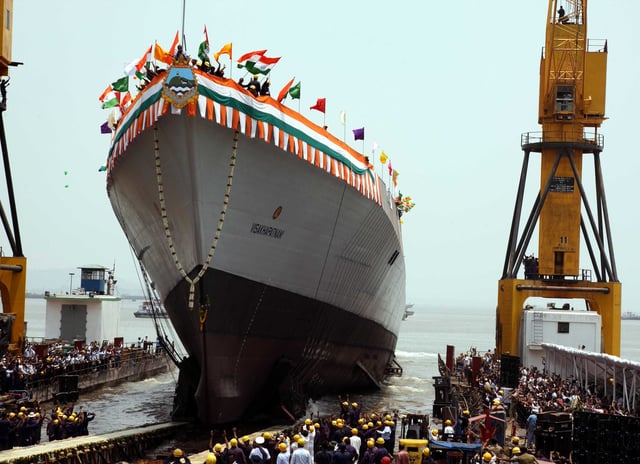
INS Visakhapatnam
Three more stealth guided missile destroyers — INS Mormugao, INS Imphal and INS Porbandar— are being built under Project 15B by the state-owned Mazagon Dock Shipbuilders.
While INS Mormugao and INS Imphal have been launched in 2016 and 2019 respectively, INS Porbandar is still under construction. All three destroyers are likely to be in service by the end of 2025.
3) INS Arighat
INS Arighat, India’s second ballistic missile submarine, is currently in the last stage of its sea trials and likely to join the sea leg of Indian nuclear triad this year.
The nuclear submarine, which was launched in November 2017 by the then Defence Minister Nirmala Sitharaman, is capable of carrying 12 K-15 or four K-4 submarine-launched ballistic missiles.
While the K-15 has a range of nearly 750 kilometres, the K-4 can strike targets as far as 3,500 kilometres.
4) Light Combat Helicopter
The Indian Air Force is likely to sign a contract with Hindustan Aeronautics Limited for the indigenously developed Light Combat Helicopter this year.
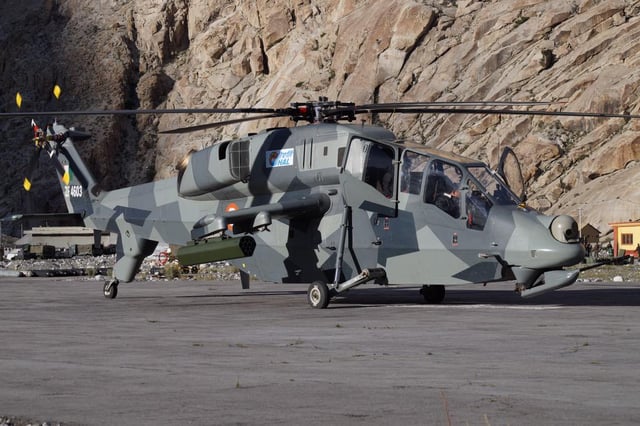
Light Combat Helicopter Ladakh
Expecting a deal by the end of 2020, HAL has already begun the production of five new aircraft. “...assuming we’re receiving the order, we’ve already begun production of five new aircraft immediately,” HAL Chairman R Madhavan said in an interview with Livefist in June 2020.
“We are awaiting contract signature. The delivery of the first 15 can happen almost immediately,” he said back then.
“We’ve already made structures for nine inhouse using HAL money. They only need to be equipped. Will take six months to deliver and we can do it before the stipulated time in contract. Will be the first time a delivery is happening well in advance to the users,” he said back then.
5) S-400
The delivery of the Russian-built S-400 Triumf missile defence systems will begin this year. India had signed a $5.4 billion deal with Russia in 2018 for the supply of five S-400 units to the Indian Air Force.
The missile defence system has already been inducted by China, which had signed a deal with Russia in 2015.
[IMG alt="
Russian S-400 Triumf missile
system in Latakia. (PAUL GYPTEAU/AFP/Getty Images)
"]https://images.assettype.com/swaraj...01657334.jpg?w=640&auto=format,compress[/IMG]
Russian S-400 Triumf missile system in Latakia. (PAUL GYPTEAU/AFP/Getty Images)
The S-400 missile defence system can be armed with four different missiles with ranges of 400 km, 250 km, 120 km and 40 km. It can track enemy targets up to a range of around 600 kilometres using its long-range radar.

1) MH 60R
During US President Donald Trump’s 2019 visit to India, the two countries had signed a $2.6 billion deal for the supply of 24 MH-60R Sea Hawk helicopters to the Indian Navy. The first of these helicopters will be delivered this year.
The MH-60s will replace the Indian Navy’s obsolete Sea King anti-submarine helicopters inducted in the 1970s and 80s.
The Indian Navy’s MH-60s will be equipped with AGM-114 Hellfire air-to-surface missiles, the Kongsberg Naval Strike Missile with proven sea-skimming capabilities for the anti-ship role and Raytheon MK54 torpedoes.
These helos will also have Advanced Precision Kill Weapon System (APKWS) laser-guided rockets, which can be used to destroy targets with accuracy and minimum collateral damage. According to its maker, BAE Systems, APKWS “redefines precision” and gives a “low-cost surgical strike capability”.
2) P 15B Destroyers
INS Visakhapatnam, the first of the Project 15B destroyers, is currently undergoing sea trials. The lead Visakhapatnam-class destroyer is likely to complete sea trials this year and enter service in the Indian Navy before the end of 2021.

INS Visakhapatnam
Three more stealth guided missile destroyers — INS Mormugao, INS Imphal and INS Porbandar— are being built under Project 15B by the state-owned Mazagon Dock Shipbuilders.
While INS Mormugao and INS Imphal have been launched in 2016 and 2019 respectively, INS Porbandar is still under construction. All three destroyers are likely to be in service by the end of 2025.
3) INS Arighat
INS Arighat, India’s second ballistic missile submarine, is currently in the last stage of its sea trials and likely to join the sea leg of Indian nuclear triad this year.
The nuclear submarine, which was launched in November 2017 by the then Defence Minister Nirmala Sitharaman, is capable of carrying 12 K-15 or four K-4 submarine-launched ballistic missiles.
While the K-15 has a range of nearly 750 kilometres, the K-4 can strike targets as far as 3,500 kilometres.
4) Light Combat Helicopter
The Indian Air Force is likely to sign a contract with Hindustan Aeronautics Limited for the indigenously developed Light Combat Helicopter this year.

Light Combat Helicopter Ladakh
Expecting a deal by the end of 2020, HAL has already begun the production of five new aircraft. “...assuming we’re receiving the order, we’ve already begun production of five new aircraft immediately,” HAL Chairman R Madhavan said in an interview with Livefist in June 2020.
“We are awaiting contract signature. The delivery of the first 15 can happen almost immediately,” he said back then.
“We’ve already made structures for nine inhouse using HAL money. They only need to be equipped. Will take six months to deliver and we can do it before the stipulated time in contract. Will be the first time a delivery is happening well in advance to the users,” he said back then.
5) S-400
The delivery of the Russian-built S-400 Triumf missile defence systems will begin this year. India had signed a $5.4 billion deal with Russia in 2018 for the supply of five S-400 units to the Indian Air Force.
The missile defence system has already been inducted by China, which had signed a deal with Russia in 2015.
[IMG alt="
Russian S-400 Triumf missile
system in Latakia. (PAUL GYPTEAU/AFP/Getty Images)
"]https://images.assettype.com/swaraj...01657334.jpg?w=640&auto=format,compress[/IMG]
Russian S-400 Triumf missile system in Latakia. (PAUL GYPTEAU/AFP/Getty Images)
The S-400 missile defence system can be armed with four different missiles with ranges of 400 km, 250 km, 120 km and 40 km. It can track enemy targets up to a range of around 600 kilometres using its long-range radar.

Five Weapon Platforms The Indian Armed Forces Are Likely To Induct In 2021
Here are five weapon platforms the Indian armed forces may induct in 2021.
swarajyamag.com
Sprut tanks is wastage of money ...best option will be alight take on the chassis of Korean Howitzer gun K 9 gun ...ATAGS 155mm
2S25 Sprut-SD
Athos 155mm
Pinaka MK2
MRSAM (Barak 8)
Unproven system vs Mature product from proven manufacturer.Sprut tanks is wastage of money ...best option will be alight take on the chassis of Korean Howitzer gun
Sprut was not proven ...it will be like Mig 29 Ks a proven product by a proven manufacturer, no country uses light tanks so it will be best option to develop our own system. I agree time being sprut can fill the gap but in really small numbersUnproven system vs Mature product from proven manufacturer.

India’s light tank debate crosses shores
The PLA’s aggressive deployment in eastern Ladakh and its potential of quickly escalating into a full-blown conflict has seen the Indian army going in for fast track purchases to meet equipment shortfalls.
Last edited:
K9's chassis isn't built for taking enemy fire, particularly Tank rounds and ATGMs. They'll blow a hole right through since K9 intention is to be placed away from the borders...out of enemy's line of sightSprut tanks is wastage of money ...best option will be alight take on the chassis of Korean Howitzer gun K 9 gun ...
Modifying it might cost a bomb and with modern ATGMs in place, it might still not be effective
Athos is unlikely...might be the same Spike ATGM sagaATAGS 155mm
2S25 Sprut-SD
Athos 155mm
Pinaka MK2
MRSAM (Barak 8)
I just said chassis , maybe they can design the turret inhouse and use trophy like active protection to keep the weight lowK9's chassis isn't built for taking enemy fire, particularly Tank rounds and ATGMs. They'll blow a hole right through since K9 intention is to be placed away from the borders...out of enemy's line of sight
Modifying it might cost a bomb and with modern ATGMs in place, it might still not be effective
There's some decent analysis on strat front forum on why modifying a K9's chassis wouldn't work...take a lookI just said chassis , maybe they can design the turret inhouse and use trophy like active protection to keep the weight low
Believe me, I don't like Russian hardware ( export version), just see how they literally serve a defeat to Armenia. I think L&T + DRDO + some Israeli or French assistance can easily produce a light tank suitable for Indian conditions with some technical edge over ChineseThere's some decent analysis on strat front forum on why modifying a K9's chassis wouldn't work...take a look
Believe me, I don't like Russian hardware ( export version), just see how they literally serve a defeat to Armenia. I think L&T + DRDO + some Israeli or French assistance can easily produce a light tank suitable for Indian conditions with some technical edge over Chinese
In any case, a small batch might be fine, just to work out proof of concept and develop some doctrines with our mountain divisions.
If it works out well (compare to just arming our boys with AT guns + more sensors), then India definitely should look to make a local optimised system. But it would again depend on scope and numbers required by the doctrine field testing.
Keep in mind collaboration with DRDO means red-tape and bureaucracy. Not all DRDO divisions perform the same. For instance, their missile division is among their best which is why they're churning out missiles while also actively collaborating with the Israelis and Russians for the MR-SAM and Brahmos respectively.Believe me, I don't like Russian hardware ( export version), just see how they literally serve a defeat to Armenia. I think L&T + DRDO + some Israeli or French assistance can easily produce a light tank suitable for Indian conditions with some technical edge over Chinese
Development of tanks and mobility platforms is the responsibility of DRDO's ARDE which is among their worst performing divisions. To top it off, PSU babus would want stuff to be done their way, bossing around, ages for approvals, poor project management with least autonomy to the private sector
Last edited by a moderator:
Then the best approach should be the K9 Vajra type ..... let some private player collaborate with the foreign vendor (nonrussian) and deliver a product ... Elbit system product looks promisingKeep in mind collaboration with DRDO means red-tape and bureaucracy. Not all DRDO divisions perform the same. For instance, their missile division is among their best which is why they're churning out missiles while also actively collaborating with the Israelis and Russians for the MR-SAM and Brahmos respectively.
Development of tanks and mobility platforms in the responsibility of DRDO's ARDE which is among their worst performing divisions. To top it off, PSU babus would want stuff to be done their way, bossing around, ages for approvals, poor project management with least autonomy to the private sector
MOD is lobbying for Athos.Athos is unlikely...might be the same Spike ATGM saga
I believe it was Israel's defence ministry which was lobbying for Athos. Even though they offered 70% local sourcing, it would just kill both Dhanush & ATAGS and near future hope of self-reliance in artillery systemsMOD is lobbying for Athos.
Parallel procurement not to mention cheaper than ATAGS.I believe it was Israel's defence ministry which was lobbying for Athos. Even though they offered 70% local sourcing, it would just kill both Dhanush & ATAGS and near future hope of self-reliance in artillery systems
It would end up with the same fate as our assault rifles tender. Two tranches of 93k rifles each were ordered from Sig while the AK-203 deal will most likely be cancelled. The same with Spike ATGMs where the deal has been cancelled multiple times to procure DRDO's MPATGM. Eventually, emergency purchases of Spike were made post Balakot with no deal for MPATGM in sight.Parallel procurement not to mention cheaper than ATAGS.
Aero India 2021 next month will showcase a range of indigenously developed helicopters
With emphasis on promoting defence exports, the India Pavilion at Aero India 2021 next month will showcase a range of indigenously developed helicopters while Defence Minister Rajnath Singh is scheduled to hold a conclave of Defence Ministers from the Indian Ocean Littoral (IOR) states, according to a senior defence official.“We have matured in helicopters and have several in various categories. We are now capable of [designing and manufacturing] any kind of helicopter,” the official said.
A Light Utility Helicopter (LUH), a weaponised Advanced Light Helicopter (ALH) and a Light Combat Helicopter (LCH) will be on display inside the pavilion, the official said. A civilian version of the ALH will be on display outside. All these helicopters have been designed and manufactured by the Hindustan Aeronautics Limited (HAL).
In addition to the Defence Ministers’ conclave, plans are also on to hold an Air Chiefs’ conclave. Also, about six to seven official delegations are expected to be there at Aero India in addition to various companies. With less than a month left for the biennial air show, construction of the halls and facilities is at advanced stages of completion.
Stating that there was a lot of interest in Aero India as other such major air shows have been cancelled, the official said, “More than 98% of the stalls are booked and about 93% of them have paid for it.”
LUH for Army
The LUH for the Army, which has completed all tests and also demonstrated its high-altitude capability in hot and high weather conditions last September, is likely to get the Initial Operational Clearance (IOC) at the Aero India, the official said. The Air Force variant was accorded the IOC by the Centre for Military Airworthiness & Certification (CEMILAC) in February last year.
The LUH is a three-tonne helicopter positioned as replacement for the Cheetah and Chetak helicopters in service. According to HAL, it is capable of flying at 220 kmph, service ceiling of 6.5 km and a range of 350 km with 500 kg payload.
In view of the pandemic, the 13th edition of the biennial Aero India will be held only on three business days from February 3. Every safety precaution with respect to COVID-19 has been taken.
The government has set an ambitious target of achieving a manufacturing turnover of $25 billion or ₹1,75,000 crore including exports of $5 billion in aerospace and defence goods and services by 2025.
https://www.thehindu.com/news/natio...omoting defence,according to a senior defence



